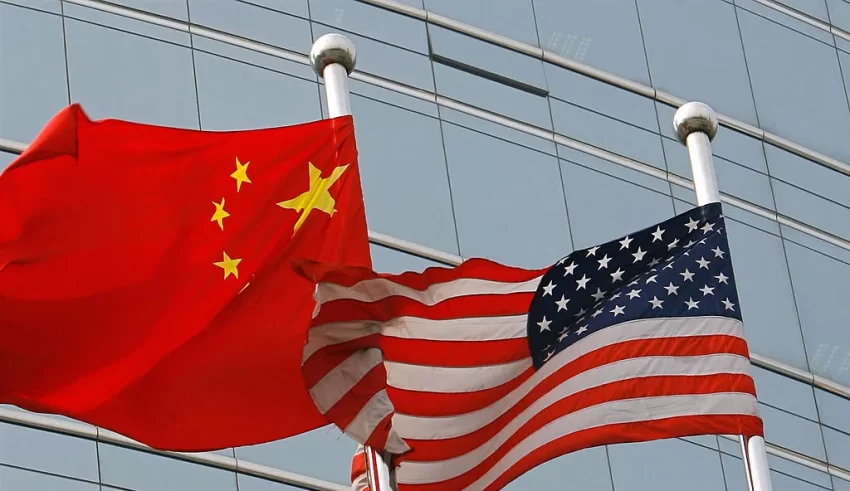
With multiple reports alerting to the necessity for developed countries to invest and develop more sustainable and renewable energy sources that combat pollution, there is the strategic certainty that such a global challenge such as climate change can only be addressed through global cooperation.
However, in an increasingly multipolar world with competing powers and increasingly more tense relations between them, China and the US, the worlds super-powers are currently in an open economic war and technological competition that has a direct impact on the fight against climate change.
As a consequence, it should be taken into consideration that although international cooperation is being hindered by this competition, there is also the opportunity to use green energy and energy investment as a means to achieve more influence and power, something China has been quite successful in doing.
Thus, the US must develop a plan to counter the influence of China in renewables and green energy investments if it wishes to remain the main global power since with climate change renewable energy tech and green energy finance will be central elements of power and influence.
One must first however understand how China has gained its influence and also the impact of its strategic decisions in green energy and how they are felt globally.
The global leadership of China in green energy projects comes as a result of putting into effect an energy investment plan that turned it into one of the largest financiers of energy projects globally with China´s major two policy banks the Chinese Development Bank and the Chinese Export-Import Bank having achieved a total of 196.7 billion in overseas energy sectors between 2007 and 2016.
In addition, another major strategic victory of the Chinese foreign policy of energy investment has been through its investments becoming the leading outbound source in terms of FDI in electricity generation, with fossil fuel projects receiving around 75 per cent of its financing investments.
Its Belt and Road initiative is another contributor to its energy dominance in the world and as made China a leader in energy infrastructure which a central goal that is aligned with its vision of becoming the main superpower of the world.
Thus it´s unsurprising that China´s overseas energy finance has such an undeniably powerful impact in global energy and climate change, with about 314 million tons of CO2 emissions from all its fuel-based energy projects globally according to Boston University Global Development Policy Centre and with a recent study by the same institution confirming that such impacts undermine global efforts to promote greater environmental sustainability.
It should however be taken into account that China is a sovereign super-power that has managed to create millions of jobs with its policies and that such projects if not done by China would be done by another country with the same impact, and consequently its China´s excellence and expertise in the energy sector that make it have such a visible impact, although the US has had a similar impact in the past as well.
China´s state energy strategy also aims to invest long-term credits to the recipient countries in order for those countries to then import its equipment and engineering, a strategy that has also proven to be effective in catapulting its energy high-tech industrial domestic sector.
Additionally, it should be taken into account that Chinese project developers have increasingly welcomed more green energy projects and invest more in green energy technologies, with Chinese overseas investment and financing having increased drastically over the last decade and surpassing the US, according to China´s Global Power Database.
One key driver underlying China´s recent global investment is the factual change that has taken place in the international renewable energy market in these last years with the rise of trade barriers in the West after the Great Recession having pushed more Chinese solar power manufacturers to seek commercial opportunities in developing countries.
Through its new trade plans, China became world leader in wind and solar panel technology and industrial manufacturing, with many Chinese wind turbine manufacturers viewing overseas investments as also a strategic way to achieve their value chain upgrade.
Most Chinese renewable companies today play thus a central role in renewable energy that surpasses the US in the developing world, with support from the Chinese government also being a driving factor of the country´s renewable energy programs, with the state encouraging Chinese firms to invest in solar and wind power overseas to mitigate capacity and gain more advanced technologies.
Additionally, Chinese-financed, low-carbon power plants may also facilitate international renewable energy technology transfer, with the case of China´s wind energy projects in Ethiopia and its positive impacts on transfers related with knowledge and expertise for green energy being a clear example of how central China´s role has become in green energy.
The current technological and commercial competition between both super-powers greatly threatens the possibility of further cooperation between super-powers happening which would hinder global efforts for cleaner energy usage and with majority use of renewable energy sources usage becoming a harder objective to achieve.
The most highly likely strategic scenario to come out of the rise of the current changing multilateral world order and the China-US in open competition with geopolitical and commercial tensions will be one of competing modules of green energy finance and a race for the global domination of renewable and also fossil fuel energy projects globally by competing world powers.
A recent policy example of the competition between both world powers is the recent decision by China in a mirror image of what the United States has been doing with semiconductor lithography technology, China has recently amended its rules to ban the export of several core solar panel technologies with the strategic goal of maintaining its leading status as well as its global market share in the sector.
The government of China, under the Ministry of Commerce and the Ministry of Science and Technology has also additionally issued a new law that forbids the most high-tech silicon of the highest quality in solar panels that are for export or in energy projects overseas.
It should be taken into account that Chinese firms produce more than 80% of the worlds solar panels and modules and this policy decision also comes as an answer of facing for the past decade heavy tariffs imposed by the US government.
This policy does not hinder however the growth of the Chinese green energy tech industry as one of the main figures in the high-tech industry of renewables of China confirms, Song Hao an assistant vice president of GCL Technology which is one of the main world suppliers of electronic wafers for the solar industry, saying that while the export ban would restrict the overseas expansion of Chinese firms, it would not choke off their exports from China.
Song added that it was also reasonable for the Chinese government to ban the export of its most advanced solar panels technologies as a response for the technological and commercial war that is being waged against China by the US and as a response to what many developed countries have done to China in the past.
On the part of the US, a main strategy that could be employed to effectively confront and respond in a constructive strategic manner to China´s demand-driven increase of outward-fossil fuel investments that raises its strategic energy influence and combats pollution while promoting renewable energy sources that help fight climate change would be to create a new series of low-interest financial investment loans for developing countries with energy needs for green energy production projects.
They could then in turn also help finance their own production of renewable energy technology by creating in similarity with China commercial treaties where the US would export solar panels and other renewable energy technology produced in the US to these countries at a price that could compete strategically with China.
Although this is a more complex stage of planning, one immediate area where the US could in addition and simultaneously play a central strategic role of influence for greener policies in the developing world would be to provide to governments technical and financial assistance to these countries and regulators to improve their regulations regarding environmental policies and the regulation of polluting industries.
Creating a package of low-interested loans for green energy projects would put the US in a central position globally in pushing for clean energy to become more attractive while simultaneously diminishing China´s energy influence by reducing the demand for Chinese fossil-fuel projects.
In addition, the technical and financial assistance would also increase the cost of fossil fuels relative to clean energy by making governments more aware of the negative environmental externalities of non-renewable energy projects which in most places of the global south, particularly Africa and South America are dominated by China, fomenting also a greater scrutiny on Chinese energy projects.
If successfully implemented, this strategy could in turn also create another favourable strategic result for the US that would be consequence of effectively making more pressure on China and the rest of the world to invest in green energy projects since the host country demand for fossil fuels would eventually decrease and the risk for investment of fossil fuel energy projects to investors and banks rise.
This would in turn help reassert US global leadership in such a critical sector for the world such as renewable energy projects.
By The European Institute for International Law and International Relations.














